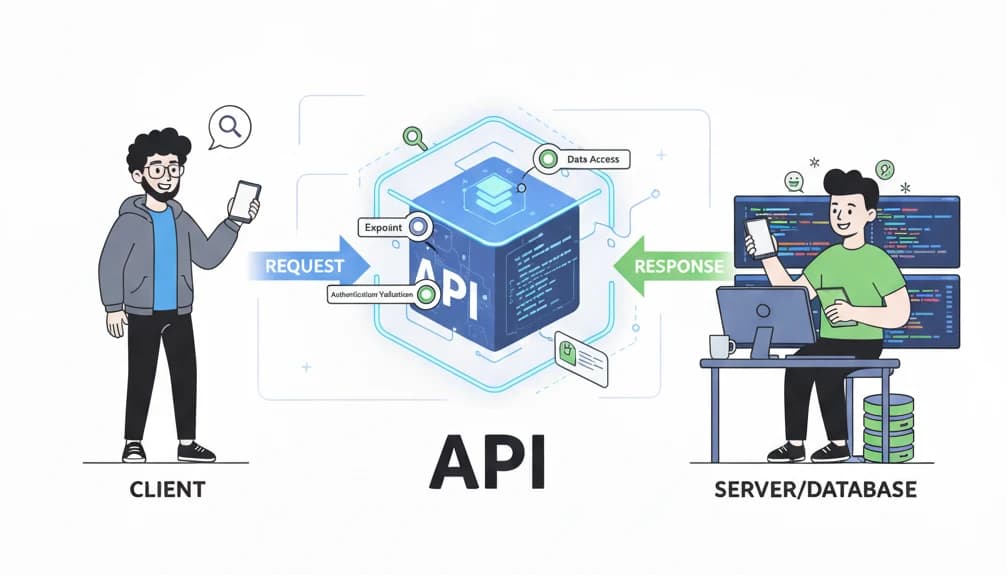How exactly an API works?

An API is like a helper that lets two different apps or systems talk to each other easily. When a person (client) wants something, like data or a service, their request goes to the API. The API takes this request, checks it, and passes it on to the server or database. The server finds the right answer and sends it back to the API, which finally gives the answer to the person. APIs make it simple for different things to work together without needing to know how each one works inside.
Example : Imagine Person A wants to order pizza but doesn't know how the pizza shop makes it. Person B is the delivery guy who takes orders and brings food. Person A tells Person B, “I want one Margherita pizza.” Person B passes this order to the pizza shop, gets the pizza once it's ready, and gives it to Person A. In this story, Person A is the client, Person B is like the API, and the pizza shop is the server. The API helps people get what they want without needing to know how the server (pizza shop) works inside.
React vs Next.js: What's the Difference?
React and Next.js are both popular tools for building websites, but they serve different purposes. React is a library that helps you create interactive user interfaces, while Next.js is a framework built on top of React that provides additional features for building complete web applications.
React (The Building Blocks)
- Just a library for creating user interfaces
- You need to set up routing, styling, and other features yourself
- Great for building components that can be used anywhere
- Requires more configuration to build a complete app
Next.js (The Complete Package)
- Built on top of React but includes many built-in features
- Automatic routing, optimized images, and server-side rendering
- Better for building complete websites and applications
- Less configuration needed to get started
Simple Analogy: Think of React like buying individual LEGO pieces - you get the basic building blocks but need to figure out how to connect them and what else you need. Next.js is like buying a complete LEGO set - you get the pieces plus instructions, a box to organize them, and everything you need to build something awesome!
When to use React: When you want maximum flexibility or are building components for existing projects.
When to use Next.js: When you're building a new website or application and want features like fast loading, SEO optimization, and easy deployment.